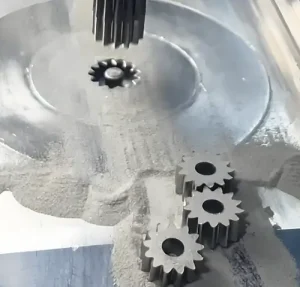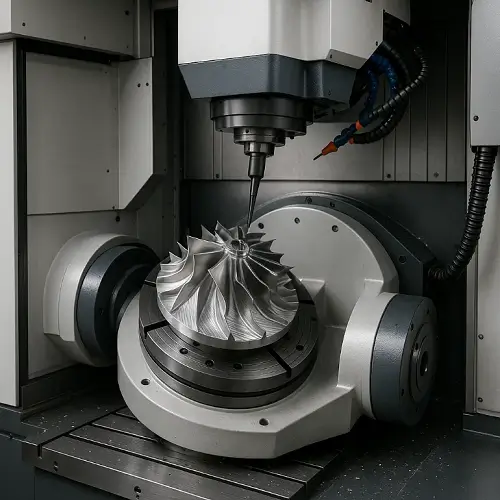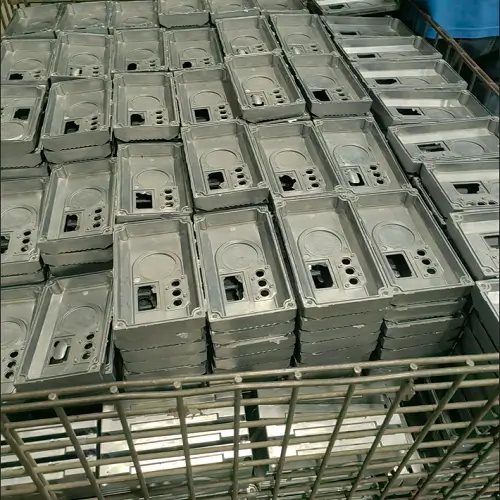Development:Before the 19th century, humans had already used metal powders to make ornaments such as gold and silver jewelry. A major breakthrough in powder metallurgy occurred in 1870, when a Russian scientist invented tungsten carbide (WC) powder, laying the foundation for hard alloys. In 1909, Coolidge in the United States invented the tungsten powder sintering process, which was used to make incandescent lamp filaments (replacing carbon filaments). Over the next two to three decades, the commercialization of hard alloy (WC-Co) cutting tools revolutionized machining. By World War II, powder metallurgy had been widely applied in military equipment, such as high-density tungsten alloy armor-piercing shells and self-lubricating bearings. Entering the new century, powder metallurgy has made significant advances in aerospace and automotive parts manufacturing.

What is Powder Metallurgy?
Powder Metallurgy (PM) is a processing technology that uses metal powders (or mixtures of metal and non-metal powders) as raw materials, forming and sintering them to create materials or products. It can produce special materials that cannot be manufactured by traditional casting methods, and allows near-net-shape forming to reduce machining waste. It is widely used across multiple industrial sectors.
Powder Metallurgy Process Flow
Powder Preparation
Mechanical methods: Using ball milling or mechanical crushing to break metals or alloys into powders.
Physicochemical methods: Including reduction (e.g., reducing metal oxides with hydrogen), electrolysis (electrolyzing metal salt solutions), and atomization (using high-pressure gas or centrifugal force to atomize molten metal into powder).
Nano powder preparation: Such as vapor deposition and sol-gel methods.
Powder Mixing
Mixing different types of powders (such as metals, alloys, lubricants, binders) evenly to ensure uniform material properties.
Forming (Compaction)
Die pressing: Filling powder into molds and compacting it using mechanical or hydraulic pressure (typically 100–1000 MPa) to form a green body.
Isostatic pressing: Used for complex shapes, pressure is transmitted through liquid or gas (cold or hot isostatic pressing).
Injection molding (MIM): Mixing powder with binders and injecting into molds, suitable for micro and complex parts.
Sintering
Heating the compacted body in a protective atmosphere (such as hydrogen, nitrogen, or vacuum) to a temperature below the melting point (usually 70%–90% of the metal’s melting point), allowing powder particles to bond through diffusion into a dense structure.
After sintering, the material’s density and mechanical properties are improved.
Post-processing (Optional)
Sizing: To improve dimensional accuracy.
Impregnation: Such as oil impregnation (for self-lubricating bearings) or resin impregnation.
Heat treatment: Quenching or tempering to improve hardness or strength.
Machining: Cutting or grinding to achieve high-precision surfaces.
Common Materials in Powder Metallurgy Production
Metal Powders
Pure metals: Iron, copper, aluminum, titanium, tungsten, etc.
Alloy powders: Stainless steel, hard alloy (WC-Co), high-speed steel, nickel-based superalloys.
Composite materials: Metal-ceramic (e.g., Al₂O₃ reinforced aluminum composites), metal-graphite (e.g., self-lubricating bearings).
Additives
Lubricants (e.g., zinc stearate), binders (used in MIM), and pore-forming agents (for porous materials).
Applications of Powder Metallurgy
Automotive Industry
Gears, connecting rods, self-lubricating bearings, brake pads (copper- or iron-based powder metallurgy materials).
Lightweight components (such as aluminum alloy structural parts).
Machinery Manufacturing
Cutting tools (hard alloy tools), molds, wear-resistant parts.
Electronics and Electrical Appliances
Electrical contacts (silver-tungsten, copper-graphite), magnetic materials (soft ferrites, NdFeB permanent magnets).
Aerospace
High-temperature alloy turbine blades, titanium alloy structural parts, porous filter materials.
Medical Field
Titanium or cobalt-chromium alloy implants, dental implants.
Energy and Chemical Industry
Fuel cell electrodes, shielding materials for nuclear reactors (e.g., tungsten-based alloys).
Daily Goods
Lock components, hardware tools, sports equipment parts.
Advantages and Limitations of Powder Metallurgy
Advantages:
High material utilization (up to 95%), energy-saving and environmentally friendly.
Capable of producing porous, composite, and high melting point special materials.
Suitable for mass production of complex-shaped parts.
Limitations:
High initial mold cost, making it uneconomical for small batches.
Difficult to form large-sized parts.
Some products have lower density and strength than cast or forged components.
With the development of 3D printing (metal additive manufacturing), powder metallurgy has further expanded as a branch of modern manufacturing. Although it is not the best in all aspects and has certain disadvantages, it remains a very feasible method for improving efficiency and controlling costs. We look forward to your feedback and communication!


